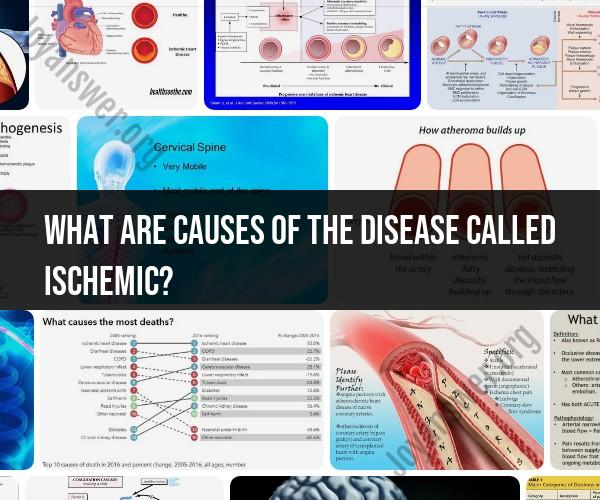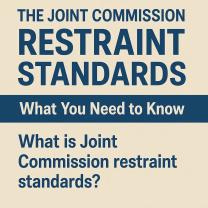What are causes of the disease called ischemic?
Ischemic diseases are a group of medical conditions that result from a reduced blood supply to a particular organ or tissue in the body. The primary cause of ischemic diseases is a decrease in blood flow, which can occur for various reasons. Here are some common causes and risk factors associated with ischemic diseases:
Atherosclerosis:
- Atherosclerosis is a major contributor to ischemic diseases. It involves the buildup of fatty deposits (plaques) in the arteries, leading to narrowing and blockage of blood vessels. This reduces blood flow to affected organs or tissues.
Coronary Artery Disease (CAD):
- CAD is a type of ischemic disease that specifically affects the coronary arteries, which supply blood to the heart muscle. It is primarily caused by atherosclerosis and can lead to conditions like angina and heart attacks.
Peripheral Artery Disease (PAD):
- PAD is similar to CAD but affects arteries outside the heart, typically those supplying the limbs. It is often caused by atherosclerosis and can lead to reduced blood flow to the legs and other extremities.
Cerebrovascular Disease:
- Cerebrovascular disease, including strokes, occurs when there is reduced blood flow to the brain. This can be caused by atherosclerosis, blood clots, or other factors.
Thrombosis and Embolism:
- Blood clots (thrombosis) or small emboli (clots that travel through the bloodstream) can block arteries and cause ischemic events. Clots can form due to various factors, including genetics, injuries, or underlying medical conditions.
Vasospasm:
- Vasospasm is a sudden constriction of blood vessels, which can reduce blood flow. It can occur in response to various triggers, including stress, cold temperatures, or certain medications.
Hypertension (High Blood Pressure):
- High blood pressure can lead to the thickening and narrowing of blood vessel walls, increasing the risk of atherosclerosis and ischemic events.
Diabetes:
- Diabetes can damage blood vessels and accelerate atherosclerosis, increasing the risk of ischemic diseases, especially in the heart, brain, and extremities.
Smoking:
- Smoking is a significant risk factor for atherosclerosis and ischemic diseases. It damages blood vessels and promotes the formation of plaques.
High Cholesterol:
- Elevated levels of cholesterol, particularly LDL (low-density lipoprotein) cholesterol, can contribute to the development of atherosclerosis.
Obesity:
- Obesity is associated with multiple risk factors for ischemic diseases, including hypertension, high cholesterol, and diabetes.
Family History and Genetics:
- Genetic factors can play a role in the development of atherosclerosis and blood clotting disorders, increasing the risk of ischemic diseases.
Age:
- The risk of ischemic diseases tends to increase with age, as blood vessels may naturally become less flexible and more prone to plaque buildup.
Sedentary Lifestyle:
- Lack of physical activity can contribute to obesity, high blood pressure, and other risk factors for ischemic diseases.
Understanding and managing these risk factors through lifestyle modifications and medical interventions can help reduce the risk of ischemic diseases and improve overall cardiovascular health. Regular medical check-ups and consultations with healthcare professionals are essential for early detection and prevention.
Causes and Risk Factors for Ischemic Disease
Ischemic disease is a type of heart disease that occurs when the blood supply to the heart muscle is reduced or blocked. This can cause chest pain, shortness of breath, and other symptoms. Ischemic disease is the most common cause of death in both men and women in the United States.
The main cause of ischemic disease is atherosclerosis, a condition in which plaque builds up on the walls of the arteries. Plaque is made up of cholesterol, fat, and other substances. As plaque builds up, the arteries narrow and become less flexible. This can reduce the blood flow to the heart muscle.
Other risk factors for ischemic disease include:
- High blood pressure
- High cholesterol
- Diabetes
- Smoking
- Obesity
- Physical inactivity
- Family history of heart disease
How Atherosclerosis Leads to Ischemic Conditions
Atherosclerosis is the most common cause of ischemic disease because it leads to the narrowing of the arteries. This narrowing can reduce the blood flow to the heart muscle, which can cause a variety of ischemic conditions, including:
- Angina pectoris: Angina pectoris is chest pain that occurs when the heart muscle is not getting enough blood. Angina pain is often described as a squeezing or pressure in the chest.
- Myocardial infarction (heart attack): A heart attack occurs when the blood flow to a part of the heart muscle is completely blocked. This can damage or destroy the heart muscle.
- Sudden cardiac death: Sudden cardiac death is a sudden and unexpected death caused by a heart problem. Sudden cardiac death is often caused by a heart attack, but it can also be caused by other heart problems, such as arrhythmias (abnormal heart rhythms).
Lifestyle Changes to Reduce Ischemic Disease Risk
There are a number of lifestyle changes that you can make to reduce your risk of ischemic disease, including:
- Eating a healthy diet: A healthy diet for ischemic disease prevention is low in saturated and trans fats, cholesterol, and sodium. It is also high in fruits, vegetables, and whole grains.
- Exercising regularly: Aim for at least 30 minutes of moderate-intensity exercise most days of the week.
- Maintaining a healthy weight: Obesity is a major risk factor for ischemic disease. If you are overweight or obese, losing even a small amount of weight can help to reduce your risk.
- Quitting smoking: Smoking is a major risk factor for ischemic disease. Quitting smoking is one of the best things you can do to reduce your risk of ischemic disease.
- Managing stress: Stress can increase your risk of ischemic disease. Find healthy ways to manage stress, such as exercise, relaxation techniques, and spending time with loved ones.
If you have any of the risk factors for ischemic disease, it is important to talk to your doctor about ways to reduce your risk. Your doctor may recommend lifestyle changes, medication, or other treatments to help protect your heart health.













